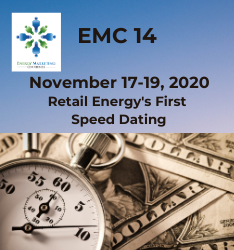|
|
|
|
|
FERC Approves Nearly $1.5 Million Settlement With Power Marketing Consultant, Founder
The following story is brought free of charge to readers by EC Infosystems, the exclusive EDI provider of EnergyChoiceMatters.com
FERC approved a Stipulation and Consent Agreement (Agreement) between its Office of Enforcement (Enforcement) and Richard Silkman (Silkman) and Competitive Energy Services, LLC (CES) (together, Respondents) (Enforcement and Respondents collectively, the Parties) which resolves (a) the Commission's claims against Respondents for alleged violations of section 222 of the Federal Power Act (FPA) and 18 C.F.R. § lc.2 (2020) and (b) the Commission's action captioned FERC v. Silkman, No. 1:16-cv-205-JAW (D. Me.) (Federal Court Lawsuit) in which the Commission seeks affirmance of the Orders Assessing Civil Penalties it issued to CES and Silkman in which it concluded that Respondents violated section 222 of the FPA and 18 C.F.R. § 1c.2.
Under the stipulation, Respondents agree to make payments totaling $1,475,000 in installments over seven years, divided as follows: (a) CES will pay $166,841.13 in disgorgement to ISO-New England, Inc. (ISO-NE) and a penalty of $708,158.87 to the United States Treasury and (b) Silkman will pay a penalty of $600,000 to the United States Treasury. Respondents will pay the settlement amount in annual installments of $210,714.28 a year for seven years (although Respondents at their option may make the payments earlier or in a greater amount), with the payments allocated first to disgorgement and then civil penalties. Respondents will allocate each payment among themselves as they determine appropriate.
The Respondents neither admit nor deny the alleged violations. Specifically, Respondents neither admit nor deny that they violated the FPA or 18 C.F.R. § 1c.2.
Competitive Energy Services and Richard Silkman issued the following statement concerning the matter:
"After 13 years of vigorously litigating a Federal Energy Regulatory Commission
(FERC) claim, Competitive Energy Services and one of its founders, Richard Silkman,
(together, CES) have agreed to a neutral settlement. The claim related to a single
consulting job for one of its more than 300 clients that occurred in 2007 concerning a
program that FERC terminated in 2008 as fundamentally flawed. CES chose to end
fruitless and expensive litigation in order to allow their growing energy consulting
company to move into the future fully focused on serving the needs of its many clients.
"After more than a dozen years awaiting our first and only chance to contest
FERC's allegations in open court, with uncertainty around when a civil trial could even
take place due to Covid-19, and with the firm's founders turning over management to a
new generation, CES concluded that a settlement to end this distraction made sense.
"In a settlement mediated by a federal magistrate judge, CES and FERC agreed to
a settlement in which CES 'neither admits nor denies' FERC's assertions, and FERC
accepts an 85% reduction in its requested penalties and agrees to a permanent
resolution and dismissal of its complaint."
--- Statement from Competitive Energy Services and Richard Silkman
Competitive Energy Services acts as a consultant and holds market-based rate authority.
From approximately July 2007 to February 2008 (the Relevant Period), Respondents were retained by Rumford Paper Company (Rumford) with respect to Rumford's participation in ISO-NE's Day-Ahead Load Response Program (DALRP).
Enforcement investigated the role of Respondents in connection with the DALRP during the Relevant Period. On April 17, 2012, the Commission's Office of Enforcement Staff (OE Staff) submitted to the Commission an Enforcement Staff Report and Recommendations (OE Staff Report) alleging that CES had violated the Commission's Prohibition on Market Manipulation, 18 C.F.R. § 1c.2 (2013), by conceiving of a fraudulent scheme in connection with the DALRP, so that CES and Rumford would artificially inflate Rumford's customer baseline to enable Rumford and CES to receive compensation for demand response without Rumford intending to provide the service or actually having to reduce load, as further described below
The investigation culminated in the issuance of Orders to Show Cause on July 12, 2012. Richard Silkman, 140 FERC ¶ 61,033 (2012); Competitive Energy Services, LLC, 140 FERC ¶ 61,032 (2012) (Orders to Show Cause). The Orders to Show Cause required Respondents to explain why their behavior should not be found to have violated the Commission's regulations and the FPA.
After briefing by Respondents and Enforcement in Docket Nos. IN12-12-000 and IN12-13-000, on August 29, 2013, the Commission issued Orders Assessing Civil Penalties against Respondents (Orders Assessing Penalties). In the Orders Assessing Civil Penalties, the Commission set forth the bases for its findings that Respondents' conduct during the Relevant Period with respect to the DALRP violated section 222 of the FPA and 18 C.F.R. § 1c.2.
In the Order Assessing Civil Penalties on CES, FERC had previously stated, "CES devised and implemented a scheme to inflate Rumford's customer baseline and thereby permit Rumford109 and CES to be paid for demand response that Rumford never intended to provide or actually provided. CES, based on the scheme devised by Dr. Silkman, submitted to ISO-NE demand response registration information falsely claiming that Rumford had capability to reduce its load by up to 20 MW even though CES knew that under the scheme it designed Rumford would be paid only for demand reduction reflected in its artificially inflated customer baseline. Before the initial customer baseline period, Rumford routinely used its G4 generator to meet at least a portion of its on-site electricity needs. Under this scheme, for the DALRP program hours (7:00 AM to 6:00 PM) during the five-day initial customer baseline period (July 24, 25, 26, 27, and 30, 2007), CES instructed Rumford to intentionally reduce its G4 generator's operating level by 30-40 MW from the level at which it otherwise would have operated given the prevailing fuel and energy prices and mill energy requirements. That departure from Rumford's routine generating operating practices increased the amount of mill load served by energy from the grid and cost Rumford approximately $120,000 over the five days in question. Curtailing the G4 generator in those hours – and only those hours – was uneconomic given Rumford's
ability and established practice of generating electricity from its G4 generator at lower
cost. Therefore, we find that it served no legitimate purpose, but rather ensured the
customer baseline did not reflect Rumford's normal daily consumption pattern for energy
taken from the grid. This conduct created, and fraudulently communicated to ISO-NE, a higher,
false customer baseline in those DALRP participation hours. After the initial five-day
baseline period, Rumford resumed routine operation of its G4 generation during the hours
of 7:00 AM to 6:00 PM. Because of its inflated customer baseline, Rumford portrayed
a reduction from its inflated baseline simply by resuming routine use of its G4 generator
(which displaces energy taken from the grid) and thus enabled Rumford and CES to
receive DALRP payments (calculated based on the difference between this elevated
customer baseline and Rumford's metered energy taken from the grid) without Rumford
having to alter its routine to provide any actual demand response."
CES had raised various defenses in an answer to the show cause order. Among other things, CES contended that while Enforcement
Staff’s allegation of an “inflated” customer baseline hinges on Rumford’s departure from
a “normal” customer baseline, Enforcement Staff failed to explain what a “normal” customer
baseline would be for a facility such as Rumford, whose purchases from, and sales to, the grid fluctuate significantly from day-to-day and hour-to-hour. CES maintained that, even
if deemed erroneous after-the-fact, its advice to Rumford was not a fraudulent scheme
CES had also pointed to a lack of guidance on how Rumford’s customer baseline should have been established and asserts its advice does not constitute fraud because it did not violate any ISO-NE or Commission rules, regulations, or DALRP program guidance
CES had attributed any Rumford customer baseline errors to a third party provider that served as Rumford’s
enrolling participant, who CES identified as having settled other previous allegations of
market manipulation
CES had stated that this third party provider submitted Rumford’s daily DALRP bids and was the sole entity with responsibility and the ability to speak with ISO-NE on Rumford’s behalf.
Docket Nos. IN12-12-000, IN12-13-000
ADVERTISEMENT Copyright 2010-20 Energy Choice Matters. If you wish to share this story, please
email or post the website link; unauthorized copying, retransmission, or republication
prohibited.
November 25, 2020
Email This Story
Copyright 2010-20 EnergyChoiceMatters.com
Reporting by Paul Ring • ring@energychoicematters.com
NEW Jobs on RetailEnergyJobs.com:
• NEW! -- Lead Data Analyst
-- Retail Supplier
• NEW! -- Senior Energy Pricing Analyst
• NEW! -- Senior Energy Advisor
• NEW! -- Financial Analyst -- Retail Supplier -- DFW
• NEW! -- Sr. Energy Intelligence Analyst
• NEW! -- Channel Partner Sales Manager -- Retail Supplier
• NEW! -- Sr. Billing Analyst -- Retail Supplier
• NEW! -- Director of Regulatory Affairs -- Retail Supplier -- Houston
|
|
|
|










